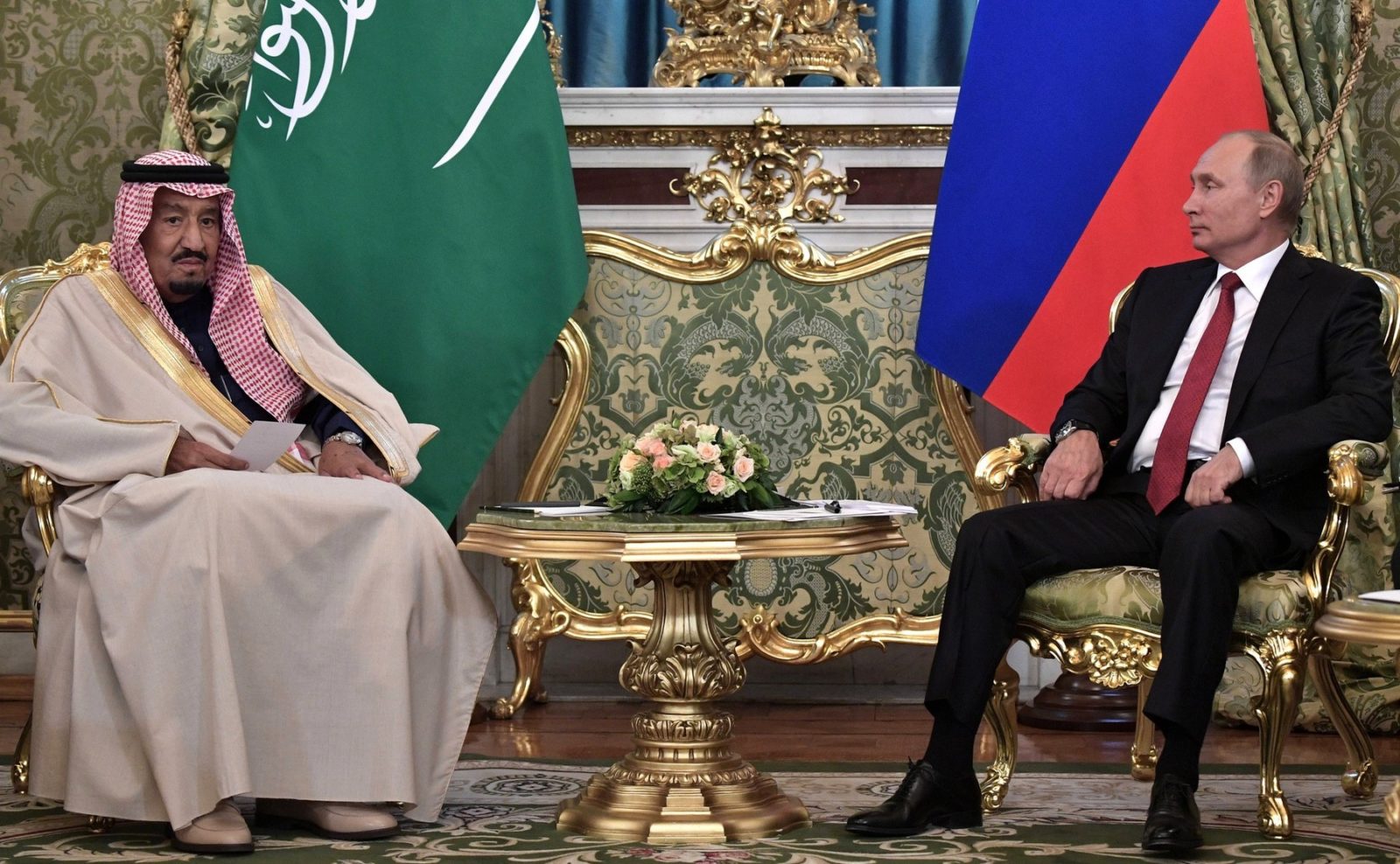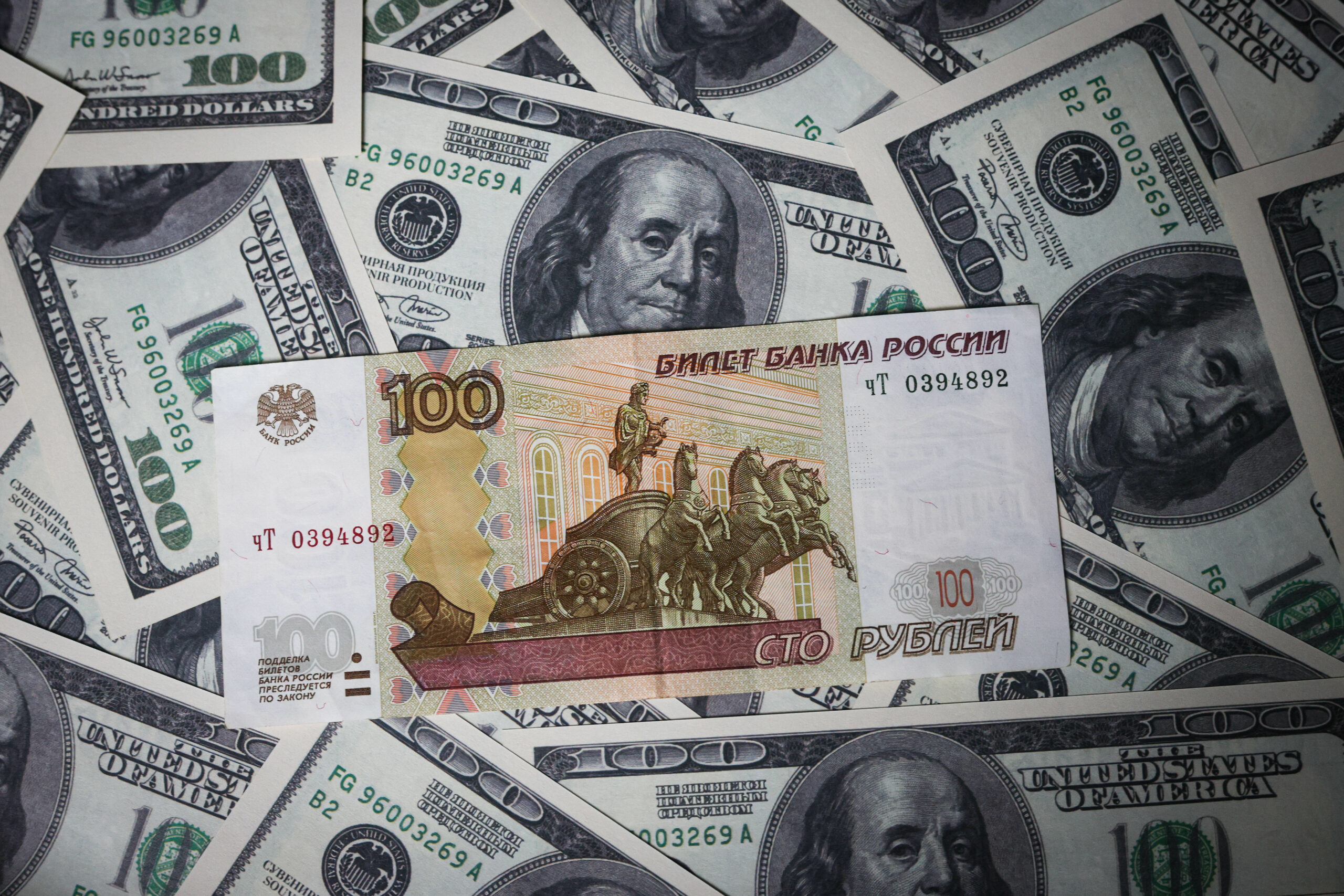Global oil markets reacted strongly to word from the St. Petersburg Economic Forum that Russia and Saudi Arabia would ease off their plans to cut oil production. Falling production in Venezuela has, in Energy Minister Alexander Novak’s estimation, added a functional cut of around 900,000 barrels per day (bpd) beyond the 1.8 million cuts agreed to at an OPEC meeting in December 2016 between major oil producing countries.
Declining production in Venezuela coincides with the US’s decision to walk away from the Joint Comprehensive Plan of Action (JCPOA) with Iran — that means severe risks hover over Iran’s oil sector, threatening further global supply cuts.
Against this backdrop, reported talks between Moscow and Riyadh deserve close scrutiny. At issue is a potential long-term agreement to coordinate production as a way of influencing oil prices. How will these talks fare? Russia has certainly gained some level of “soft power” from its cooperation with OPEC. Nevertheless, it has tethered Russian companies to a complex political and financial balancing act in the Gulf, which limits their negotiating flexibility. It is also unclear how much leverage Moscow actually has over Riyadh, which is better placed to take the hit on lower prices in return for a larger slice of market share.
Even so, Russia’s oil firms have long hoped to end the production cut agreement. Yet politically, there has been a willingness to stick to it — until now.
The Rationale for Ending Cuts
Changing market conditions are clearly behind the Kremlin’s decision to coordinate an end to production cuts: oil inventories are emptying and OPEC production wouldn’t keep pace with demand without an adjustment.
But what’s striking about Russia’s oil cooperation with Saudi Arabia is the extent to which it’s been mandated from the top down. Energy Minister Alexander Novak cited Putin’s public support as an important factor in reaching agreement in Russia, not industry support.
Rosneft CEO Igor Sechin was quite dismissive of any cut agreement during the runup to Russia’s decision to sign on in December 2016. By the middle of 2017, he warned that other players on the market were planning to raise production, despite claims of having made cuts. Lukoil CEO Vagit Alekperov was more supportive of cuts once they took effect, citing a need to settle prices in the $50-60 band for the sake of market stability. But Alekperov also noted that any sharp price increase risked further instability, and has been calling for a gradual exit once oil prices exceeded $60 a barrel. Gazprom Neft – Gazprom’s oil arm – recently warned it may not meet its 2020 production goals due to the effects of cuts.
Seasonable supply swings for gas and onshore Arctic oil production have proven a persistent problem for managing Russia’s adherence to cuts. That affects older fields, prompting cuts from newer oil fields that are generally more profitable for Russia’s oil companies. Though the issue of profitability while adhering to cuts was not decisive, it helped push the Ministry of Energy to present a bill cutting the mineral extraction tax (MET) for old fields by 50% last year.
On the whole, oil companies likely would have preferred to be able to more freely operate newer oilfields and pursue more market share in the Asia-Pacific. Price increases have helped profits, but Rosneft upped its production by 70,000 bpd over two days after word broke about easing out production cuts and Lukoil has said it can quickly ramp up production too. Russia’s oil production reached 11.09 million bpd the first week of June, a 143,000 barrel increase over its production limit set by the OPEC. Companies are clearly eager to produce more and take the hit on prices, now aided by geopolitical developments.
Saudi Arabia pulls a fast one
Aside from Venezuela, Sechin’s warning about rising production elsewhere has proven true, led by rising US production. US production stood at 8.6 million bpd when the OPEC deal was announced and now hovers around 10.77 million bpd. European refiners are buying larger volumes of crude oil from the US as Russia directs more oil towards China and the Asia-Pacific. China is also importing larger volumes, now part of ongoing negotiations with Washington in hopes of averting a full-scale trade war.
Rising US production has come to market at a time when Russia’s oil firms face limitations due to sanctions, political risks, and a reliance on debt in Russia. Concerns that rising oil prices would negatively impact economic growth were widely shared among importers, prompting a reevaluation from Riyadh in particular. Price drops from around $75-80 to a band closer to $60 won’t have a big impact on shale production in the US. Further, Russian firms are sanctioned from acquiring shale technology and Saudi Arabia isn’t. Though not urgently in demand, access to technology relevant for shale production will gradually rise in importance the longer prices remain lower.
Saudi Arabia’s easier access to technology will give the Kingdom greater flexibility in the future than an internationally isolated Russia. Saudi Aramco has already reached a deal with American firm Halliburton, a big shale player in the US, to help raise gas production at three gas fields. The techniques and technologies can be used to ramp up gas production, allowing Saudi Arabia to use less oil domestically for power generation and export more. Russia has attempted to enter Saudi Arabia’s natural gas sector for political outreach to Riyadh to maintain some sort of influence over this process. But the US can offer the shale know-how and technology Russia lacks.
Moscow has also admitted that it needs oil at $100-110 a barrel to profitably develop its Arctic offshore reserves. Easing cuts was inevitable due to the market, but the price range for oil for near to medium-term will not support Russia’s broader Arctic development plans unless technological innovations bring costs down. That’s not yet happening via innovation in Russia. In the longer-term, that will deny Moscow vital tax revenues, especially since the Mineral Extraction Tax (MET) is set to increase for oil and gas while export duties on oil are phased out.
Lots of ways in, no way out
With a lower price band, there will be greater pressure for Russian firms – namely Rosneft and Lukoil – to develop cheaper reserves elsewhere. Unfortunately for Russia, they’re mostly in the Middle East. Cooperation with Saudi Arabia has been important from a planning perspective. Market volatility makes it difficult to set long-term investment plans. But that cooperation along with deeper involvement in the region’s oil sector – namely Iran, Iraqi Kurdistan, and Libya – does not come without a price.
Iran has responded to US sanctions and rising production with a call for help from other OPEC members despite support for a $60-65 a barrel price band. Lukoil has put its projects in Iran on hold due to sanctions risks, a mix of financial caution and a desire to avoid invoking Washington’s ire to the detriment of projects in Iraq. Moscow has tried its best to thread the needle between Riyadh and Tehran, even reaching a short-term trade agreement with Iran mid-May. But on the energy side of the equation, it’s likely stuck tacking towards Saudi Arabia. OPEC’s meeting in Vienna on June 22 is going to be tense.
Russia is steadily accruing a slew of conflicting interests between regional partners. The UAE investment fund bought 44% of a Gazprom Neft subsidiary in hopes of deepening cooperation down the road. Qatar now owns 14.16% of Rosneft’s shares. Privately-owned gas producer Novatek is looking to partner with Saudi Aramco for its Arctic-2 LNG project. Rosneft has opened negotiations with Baghdad over Kurdistan’s fate given its oil and gas interests and is watching the security situation closely in Libya.
Collectively, these deals have undoubtedly given Russia a larger role in the Middle East. But it can’t make everyone happy. It’s no coincidence that Saudi Arabia offered to balance oil markets and bring prices down with a production increase after the US opted to leave the JCPOA. Russia was likely stuck tagging along given its own companies’ needs and rising production elsewhere.
Until there’s evidence of an appetite for the political risks attached to projects in Iran, Iraq will be more important. That means more pressure on Rosneft in particular, since Baghdad has demanded greater transparency in its dealings with Iraqi Kurdistan. How Moscow threads the needle between competing interests over Kurdistan remains unclear, but tensions between Saudi Arabia and Iran are only ratcheting up now that the JCPOA guardrail has been removed. Moscow could be stuck trying to restrain all sides with a fairly weak hand and a lot on the line.










